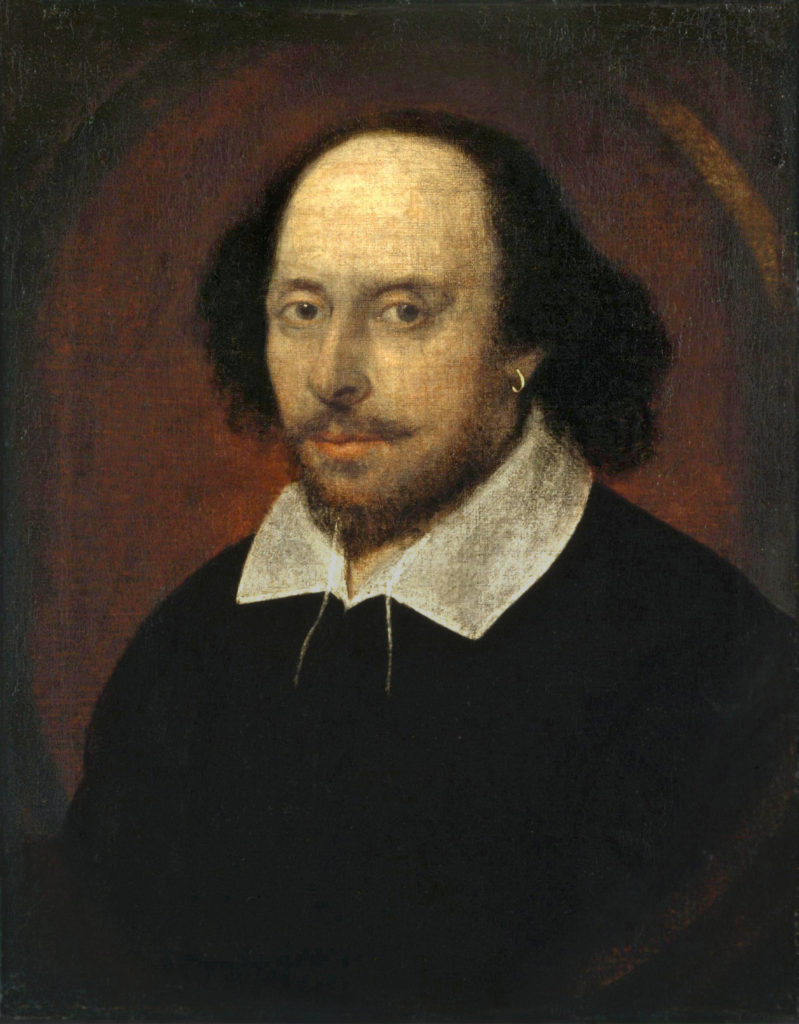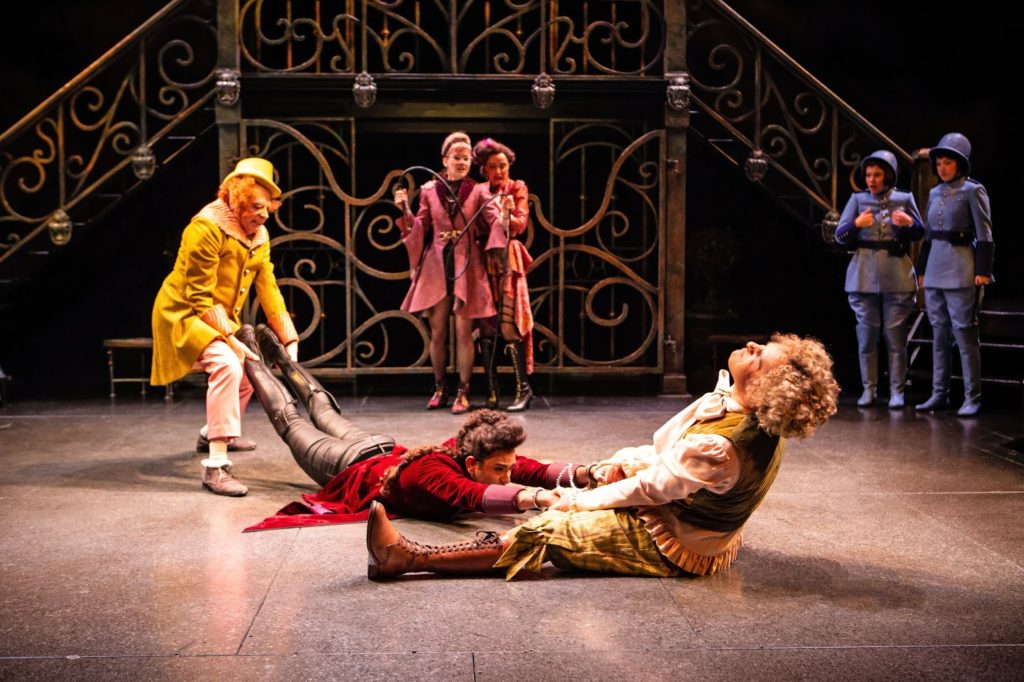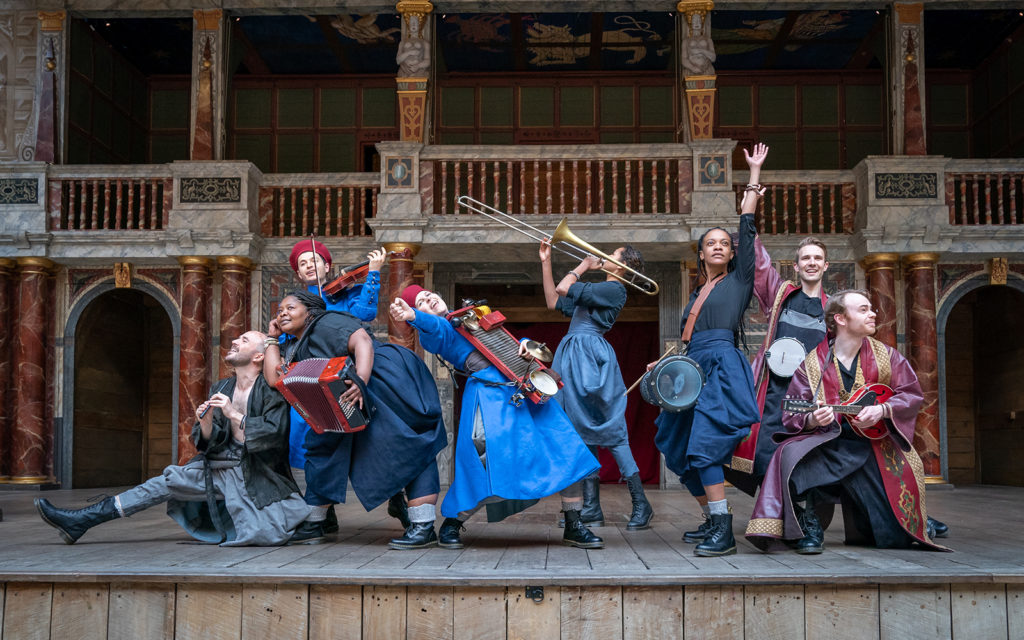
The Chandos Portrait by John Taylor
William Shakespeare
If you have made the assumption that The Comedy of Errors was written by the one and only William Shakespeare, you would be correct. This English playwright was born in 1564 and raised in Stratford-upon-Avon. He left for London around 1590 to become a playwright and actor. Little did he know that his future held fame, fortune, and adoration from both Elizabeth I and James I, receiving the highest title of King’s Player.
Historical Context
The play is believed to be written around 1589-94 as one of Shakespeare’s earliest plays (assumed to be his first). References to European politics and geography have led to various guesses about the exact date, but for now, it remains a mystery.
The First Showing
The Comedy of Errors opened its doors to the public on December 28, 1594 at Grey’s Inn during a chaotic Christmas festival. Grey’s Inn was renowned for being a high establishment, so for Shakespeare and his crew to be invited was a high honor, not to mention the fact that his audience consisted mainly of lawyers and law students.

Bust of Plautus – Public Domain
Pulling from Plautus
In present time, one could say that the story of twins getting mixed up is fairly common. The same thing could be said for Shakespeare and his time as well, because what many don’t know is that he pulled his storyline almost directly from an old Roman play called Menaechmi, written by the famous comic, Titus Maccius Plautus. Shakespeare also adapted the tale of separated twin servants from Plautus’s Amphitruo.
Shakespeare took Plautus’s work and made it his own by putting characters and emotions on another level. He reduced the number of one dimensional characters and boosted the importance of characters such as the wife of E. Antipholus who originally had no name. Similarly, Egeon, who was originally painted to play a classic helicopter parent was made by Shakespeare to be an understandable, abandoned father.
Greek Influence
As critic Anne Barton describes in Riverside Shakespeare, behind every Roman comedy, there is an heir of sobering Greek truth. It is important to note that when the Greeks began writing stories outlining the scenarios in this play like being separated from your twin, they were writing throughout a series of tragic wars where children were separated from families and citizens would be enslaved overnight. The Romans play it off as a comedic joke; however, the history behind it should be remembered.

Stratford Festival’s Comedy of Errors by Cylla von Tiedemann
The Sister Play
The Comedy of Errors is unique to Shakespeare’s repertoire as only one of two plays that uses the three principals of time, action, and place. Surprisingly, the only other show that uses all of the principals is the Tempest, which is believed to be his final play. With both his first and final play sharing this comedic commonality, Shakespeare took his career full circle and raised everyone’s spirits along the way.

Globe on Tour production of Comedy of Errors by Marc Brenner
Why Comedy of Errors?
The story of identical twins being pulled apart and then reunited is not a newfangled idea. If someone wanted to watch a general version of this story, they would merely need to scroll through Netflix and turn on the Parent Trap. So, what makes the Comedy of Errors special?
Through character depth, hilarity, and never ending action Shakespeare transforms this old story into a highly comedic play packed to the max with verbal and physical comedy for all ages. Full to the brim of wild accusations, beatings, arrests, a possible wreck of a marriage, and not to mention TWO sets of identical twins, anyone who watches is sure to be on the edge of their seats!
By Maeve Kelly for Davis Shakespeare Festival
September 18, 2019
Sources (and for more information):
http://www.theatrehistory.com/british/comedy_of_errors.html
https://www.britannica.com/topic/The-Comedy-of-Errors